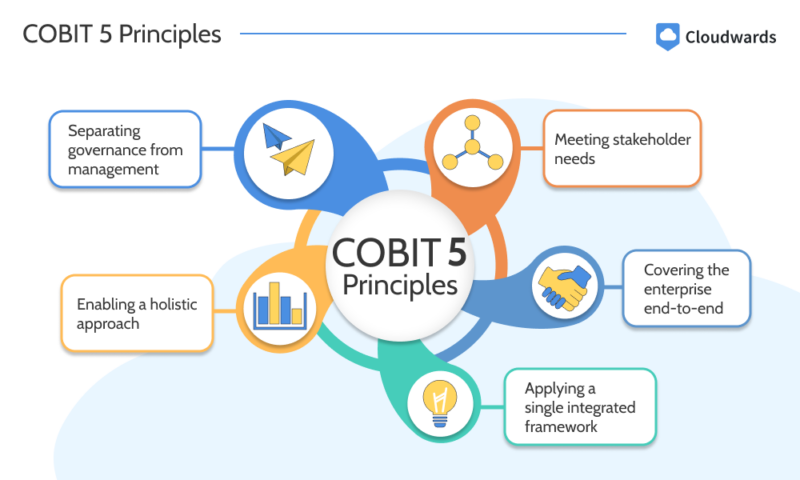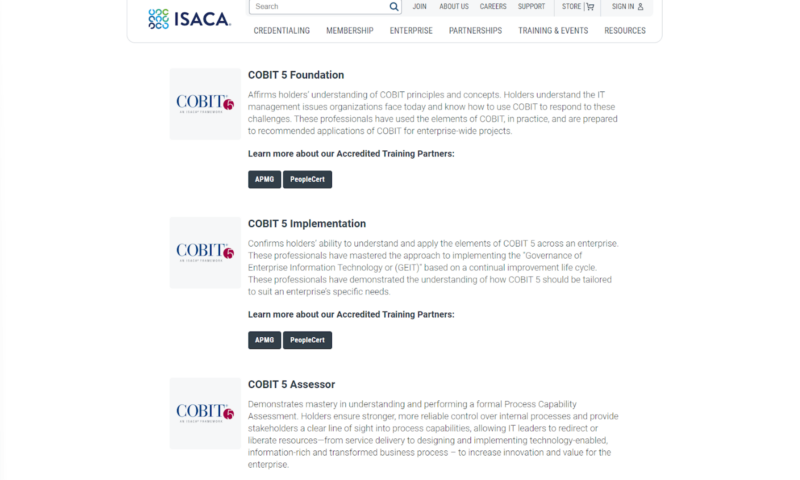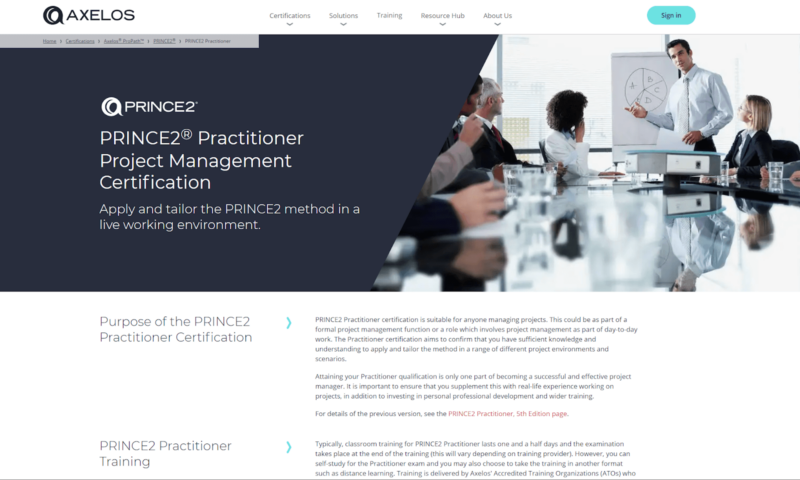Only well-managed IT departments can run smoothly, address the needs of stakeholders and meet regulatory compliance standards. This is where IT governance and management frameworks like COBIT 5 come into play. If you want to learn more about COBIT 5 and how the COBIT 5 principles can help your IT department succeed, read on.
\In order to implement the COBIT 5 principles in practice, we recommend using any of the best project management tools to keep track of tasks and processes. Furthermore, whether you want to install a new IT system in house or for a client, implement the best cloud storage or cloud-based backup services in your organization, or become proficient in IT risk management, the COBIT 5 framework and its five principles can help.
In this guide, we’ll explain what COBIT 5 is. We’ll also detail the COBIT 5 principles and explain how your IT systems can benefit from implementing them. If a career in IT management and governance interests you, we have you covered with a list of the most popular COBIT 5 certifications.
What Is COBIT 5?
COBIT 5 is a unified framework that helps an organization’s IT department tackle risk management, achieve regulatory compliance and align IT strategies with strategic objectives. The framework provides globally recognized methods, IT processes, key concepts and analytical tools that help businesses reach operational efficiency objectives.
Meaning: What Does COBIT Stand For?
COBIT stands for “control objectives for information and related technology.” Organizations use this method to ensure IT assets are organized and deployed effectively.
What Are the Five Key Principles of the ISACA COBIT 5 Framework?
The five principles of the ISACA COBIT 5 framework are meeting stakeholder needs, covering the enterprise end to end, applying a single integrated framework, enabling a holistic approach and separating governance from management. Below, we’ll cover each core principle in detail.

What Are the Benefits of COBIT 5 Processes?
Following a management and governance system like COBIT 5 can lead to many benefits. Below, we’ll cover what those using COBIT 5 can gain.
Tips & Considerations for Implementing COBIT Principles
Implementing COBIT 5 can bring many benefits to an organization. However, the decision to adopt COBIT 5 shouldn’t be rushed. Changing from one framework to another can be jarring and can require a change manager to get everyone on board. You must also ensure your team understands the following key concepts:
- COBIT 5 objectives: Ensure managers understand most of the 40 objectives COBIT 5 uses to guide decisions. You can pick and choose which objectives best align with your business, but having no prior knowledge of them will only lead to disaster.
- Components of COBIT 5: Before adopting COBIT 5, consider your team’s components (structure and skills). If the team doesn’t possess enough knowledge of the COBIT 5 framework, they’ll struggle to work in the new environment.
- COBIT 5 domains: COBIT 5 uses domain classifications to discover objectives related to planning, building and monitoring IT systems. A thorough understanding of domains is required for COBIT 5 implementation to be successful.
- COBIT 5 goals cascade: The process used in COBIT 5 to explain how goals and organizational needs are linked is called a goals cascade. Managers must have a thorough understanding of how to link business needs and goals to be successful.
Is There a COBIT 5 Certification?
COBIT 5 is a complex IT framework. Fortunately, many training programs can help you familiarize yourself with this IT management method. ISACA currently offers four COBIT 5 certifications: COBIT 5 Foundation, COBIT 5 Implementation, COBIT 5 Assessor and Implementing the NIST Cybersecurity Framework Using COBIT 5.

COBIT 5 Foundation is an entry-level certification that shows you have a basic understanding of the COBIT 5 principles and concepts, and how to use them to respond to IT challenges. COBIT 5 Implementation shows that individuals have mastered the governance of enterprise information technology (GEIT) and can apply the COBIT 5 principles across enterprises.
Then, COBIT 5 Assessor demonstrates that you’re a COBIT 5 master and can provide stakeholders with insights into how the framework increases innovation and value. The Implementing the NIST Cybersecurity Framework Using COBIT 5 certification confirms your knowledge of NIST and how to apply it using COBIT 5.
Final Thoughts
Following the five principles of COBIT 5 can help IT departments identify risks, meet regulatory requirements, appease stakeholders and align business and IT needs. The framework can also help organizations implement globally recognized processes and analytical tools that can help them achieve success in the same way that other frameworks can, such as ITIL and PRINCE2.
Have you used the COBIT 5 framework? How does it compare to ITIL, TOGAF and PRINCE2? Are there other IT management frameworks that you’d like us to cover? Let us know in the comments. Thanks for reading.
FAQ: The COBIT 5 Principles Explained
-
COBIT 5 is a framework that helps an organization’s IT department identify risks, meet regulatory compliance and align IT strategies with strategic business objectives.
-
The five principles of COBIT 5 are meeting stakeholder needs, covering the enterprise end to end, applying a single integrated framework, enabling a holistic approach and separating governance from management.
-
No, COBIT 5 is not outdated. This IT management framework is constantly being updated to meet the demands of modern IT requirements.
{“@context”:”https:\/\/schema.org”,”@type”:”FAQPage”,”mainEntity”:[{“@type”:”Question”,”name”:”What Is the COBIT Framework?”,”acceptedAnswer”:{“@type”:”Answer”,”text”:”
COBIT 5 is a framework that helps an organization’s IT department identify risks, meet regulatory compliance and align IT strategies with strategic business objectives.\n”}},{“@type”:”Question”,”name”:”What Are the Five Principles of COBIT 5?”,”acceptedAnswer”:{“@type”:”Answer”,”text”:”
The five principles of COBIT 5 are meeting stakeholder needs, covering the enterprise end to end, applying a single integrated framework, enabling a holistic approach and separating governance from management.\n”}},{“@type”:”Question”,”name”:”Is COBIT 5 Outdated?”,”acceptedAnswer”:{“@type”:”Answer”,”text”:”
No, COBIT 5 is not outdated. This IT management framework is constantly being updated to meet the demands of modern IT requirements.\n”}}]}
The post The Five COBIT 5 Principles Explained in 2024 appeared first on Cloudwards.


